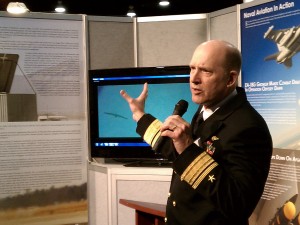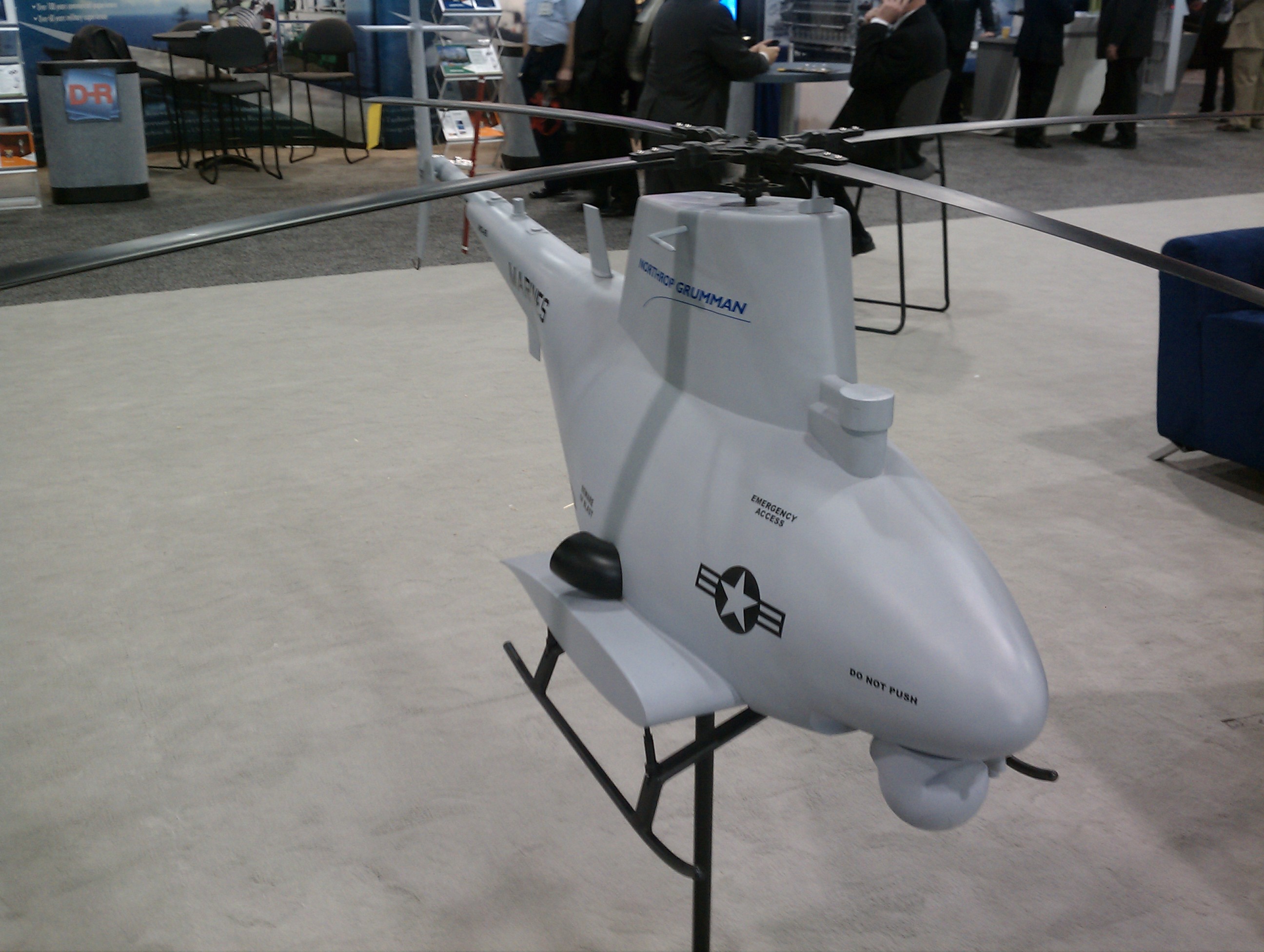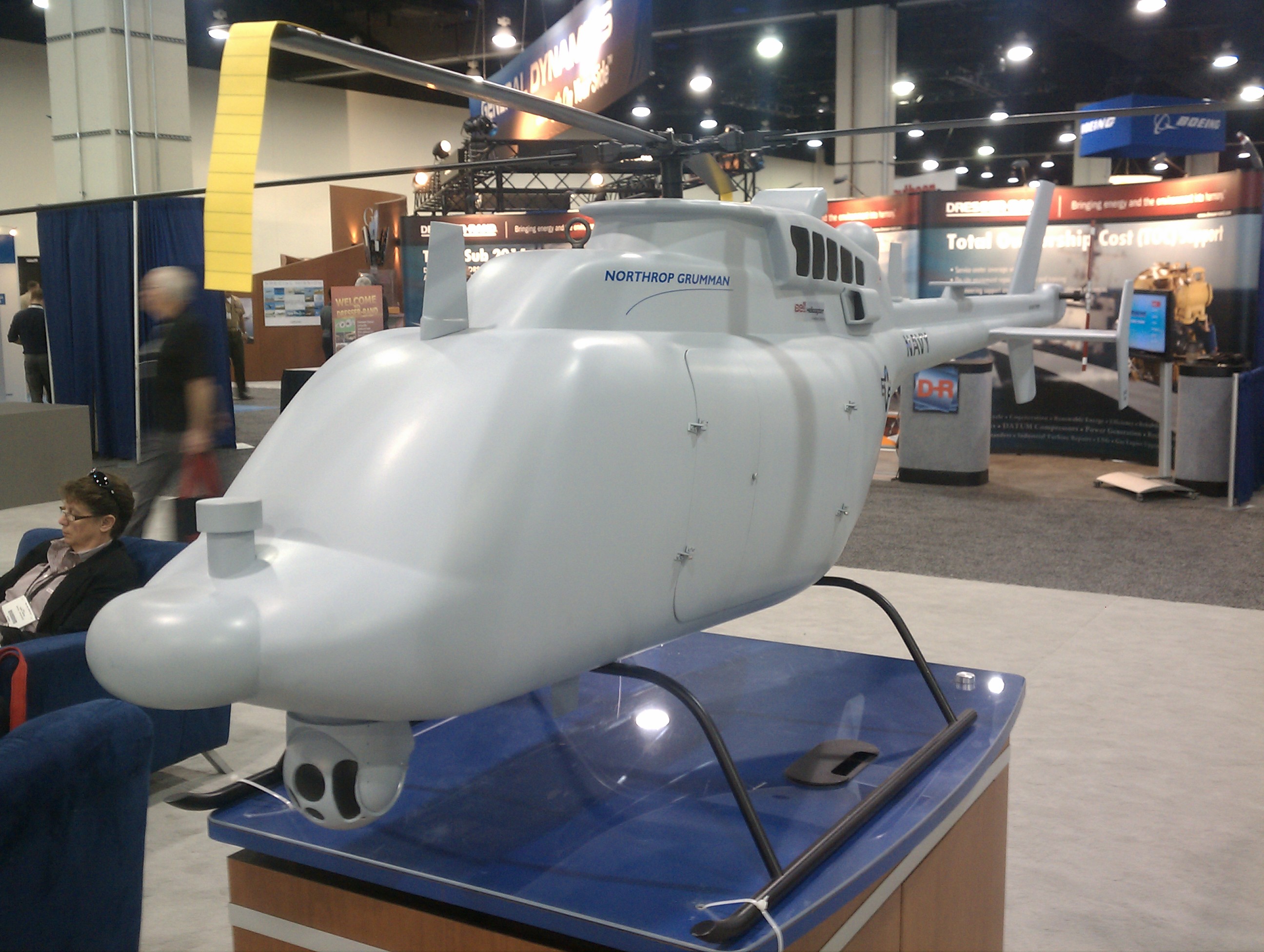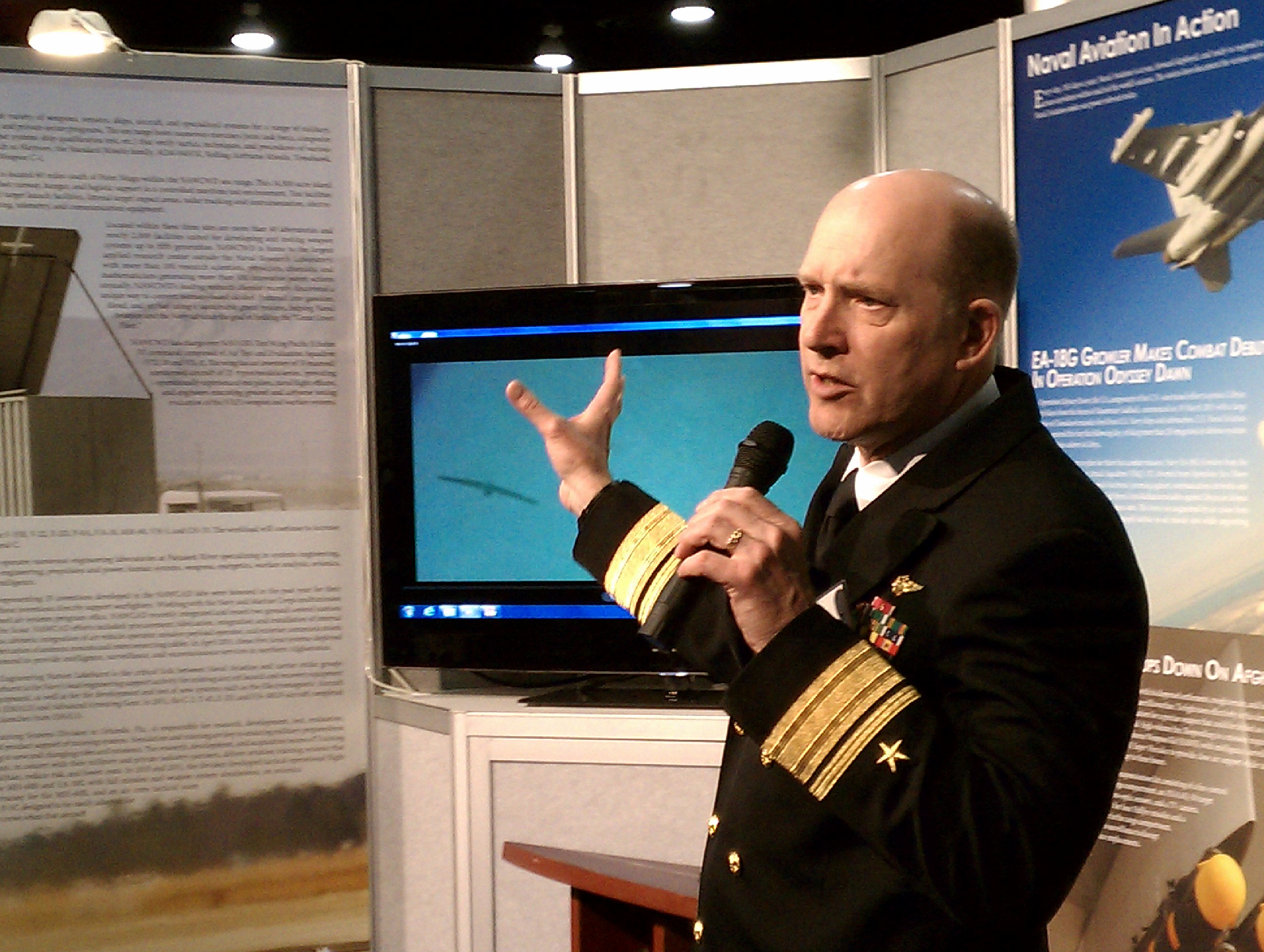Sea-Air-Space: The Fire Scout … Floats?

By Jay Friess
Editor
It may have trouble landing on the ship at times, but the MQ-8B Fire Scout unmanned helicopter can float atop the brine until sailors can rescue it from less-than-ideal landings, according to Rear Adm. Bill Shannon, head of the Navy’s unmanned and strike weapons program executive office.
Speaking before a standing room only audience at the NAVAIR booth on the floor of the Navy League’s Sea-Air-Space convention in National Harbor, Maryland Tuesday, Shannon acknowledged what has already been widely reported: “Two weeks ago, we lost two Fire Scouts.”
The first was lost during testing March 30 aboard the USS Simpson when the aircraft failed to heed commands from the ship’s UAV Common Automatic Recovery System (UCARS). The flight crew let the errant aircraft deplete its fuel and gently splash into the water before recovering it.
“The aircraft floats, so that’s nice to know,” Shannon said. He added that that ship’s crew is currently assessing the damage to the aircraft.
As for the second Fire Scout loss in Afghanistan on Apr. 6, Shannon said the program had no immediate explanation or comment. “We don’t know too much about that one, except that it was a loss. … We’re waiting for results from the mishap board,” Shannon said.
Capt. Patrick Smith, commander of the Navy and Marine Corps Tactical Multi-Mission UAS program office, also declined to address the second crash, saying, “It would all be speculation as to what happened. … In Afghanistan, I lost an aircraft, and I don’t know why.” Echoing Shannon, Smith said there was no common feature between the two crashes.
While the Navy’s mishap board reviews the crash, Smith said that Naval Test Wing Atlantic has suspended flight operations for the program, but has not fully grounded it. Operational commanders may still deploy the Fire Scout if they deem necessary.
The last time the program lost an aircraft was last June, when it was downed by enemy fire in Libya. But the Fire Scout has exhibited errant behavior in the past, as when it did in August 2010 and wandered out of Webster Outlying Field in St. Inigoes, Maryland and into Washington, D.C. airspace. Operators regained control of the aircraft, but not before the Navy considered shooting it down.
It remains to be seen whether future version of the aircraft will be able to pull off the floating trick. The Navy is preparing to migrate the program over from the Schweizer 333 airframe of the MQ-8B to an unmanned version of the Bell 407, which has been christened the MQ-8C. The ground control stations and most of the software will remain the same, but the MQ-8C will have a 14-hour operating time and carry a 700-pound payload. The MQ-8C carries a 600-pound payload, but can only remain in the air six hours.
The Navy plans to order 28 MQ-8Cs, Smith said. The aircraft will begin Navy testing in late 2013 and become operational in 2014. However, the Navy has not given up hope of reviving its cancelled Medium-Range Maritime UAS project.
“[MQ-8C] was supposed to be a stopgap for MRM,” Smith said. “Our C variant is not going to fulfill the requirements we have envisioned for the MRM.”
- Capt. Patrick Smith
- A model of the Northrop Grumman MQ-8B Fire Scout on the floor of the 2012 Sea-Air-Space Convention.
- A model of the Northrop Grumman MQ-8C Fire Scout on the floor of the 2012 Sea-Air-Space Convention.
- Rear. Adm. Bill Shannon





























